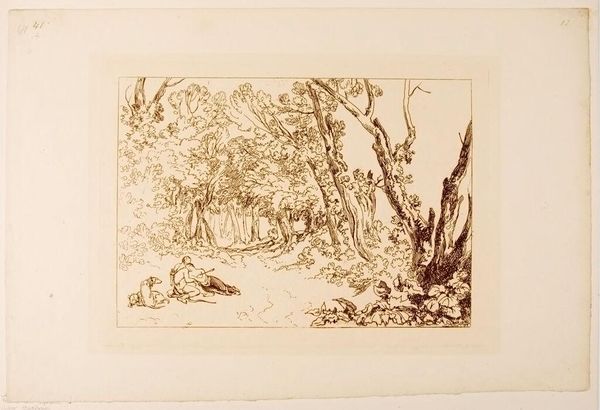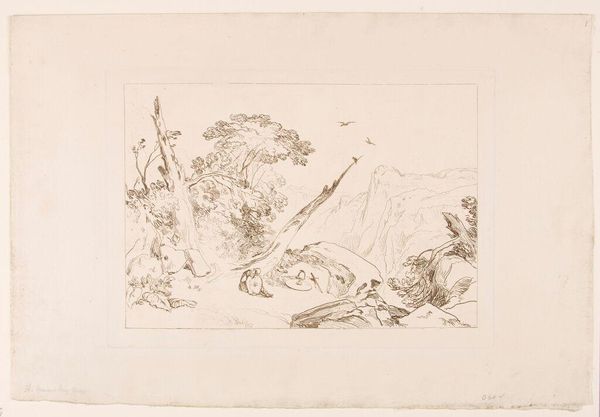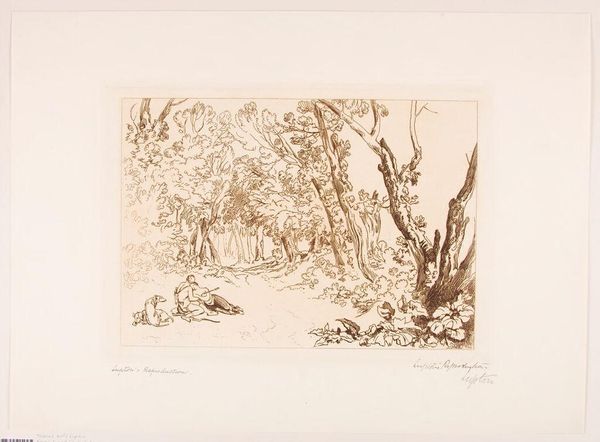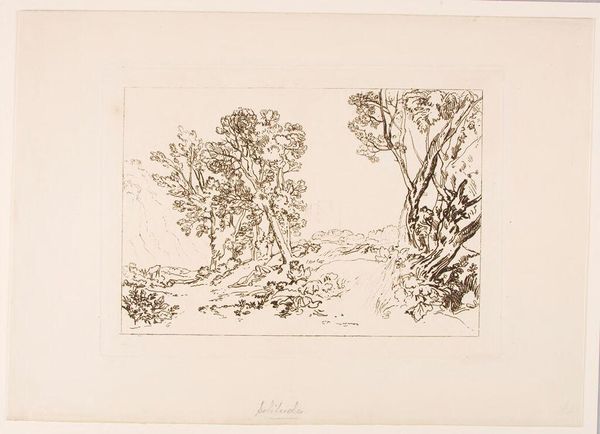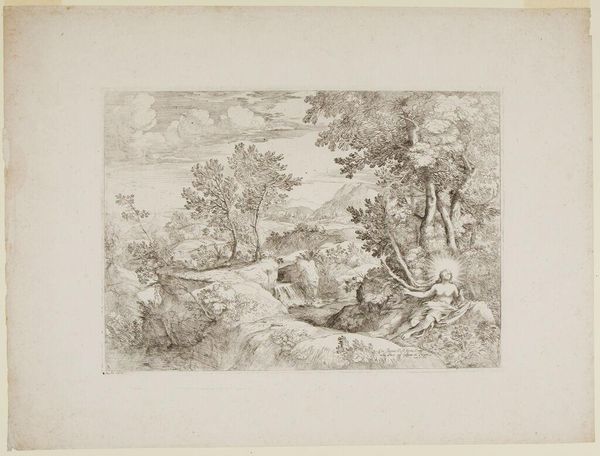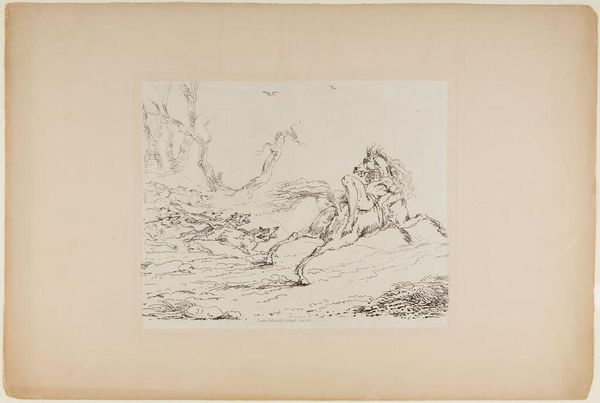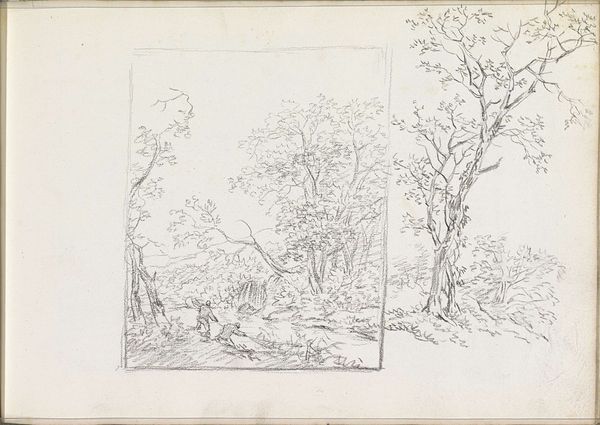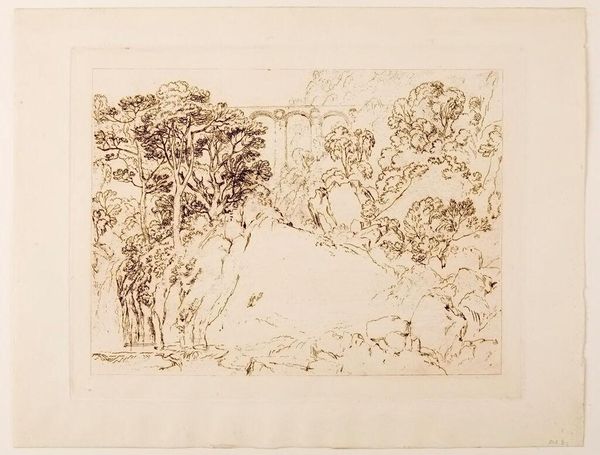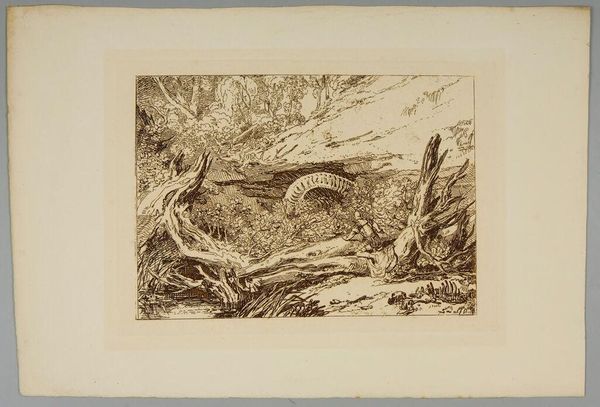
Copyright: CC0 1.0
Editor: So this is J.M.W. Turner's "The Clyde," housed right here at Harvard. The etching feels almost unfinished, yet the composition draws my eye. What strikes you about its formal qualities? Curator: Observe how Turner employs line. The hatching and cross-hatching create a sense of depth and atmosphere, yet the absence of strong tonal contrasts renders the scene ethereal, almost dissolving the forms. Note the balance achieved through the strategic distribution of dark and light areas. Editor: The line work does seem incredibly precise. Is the relative lack of detail intentional in this piece? Curator: Perhaps. The open composition, with its loosely defined forms, invites the viewer to actively participate in constructing the image, engaging with the very process of seeing. What do you think about the dynamic between representation and abstraction? Editor: I see what you mean! The formal simplicity is actually quite powerful. Curator: Indeed. The interplay of line and light reveals the essence of the landscape, rather than merely replicating its surface appearance. A profound lesson in visual economy.
Comments
No comments
Be the first to comment and join the conversation on the ultimate creative platform.
